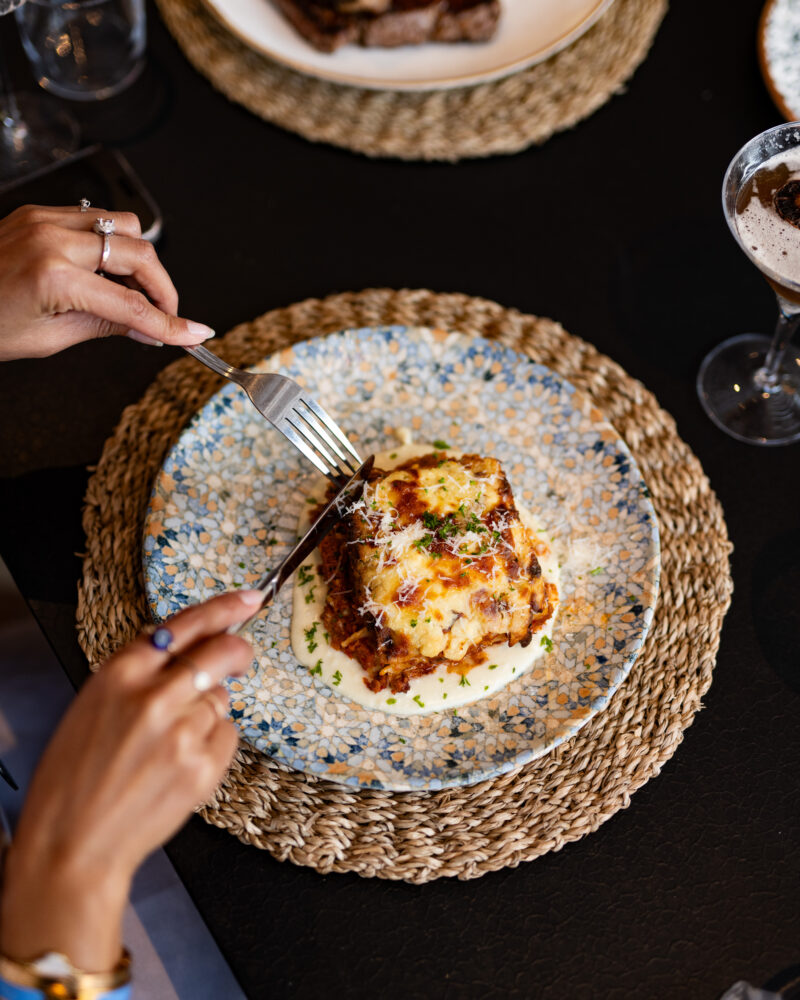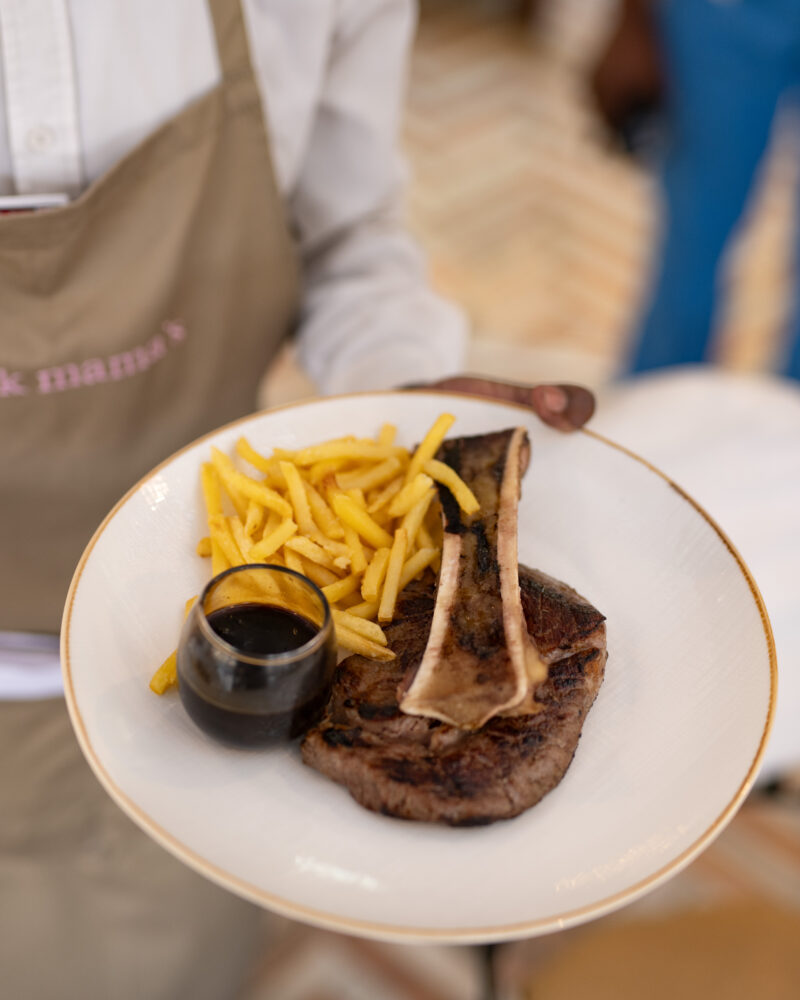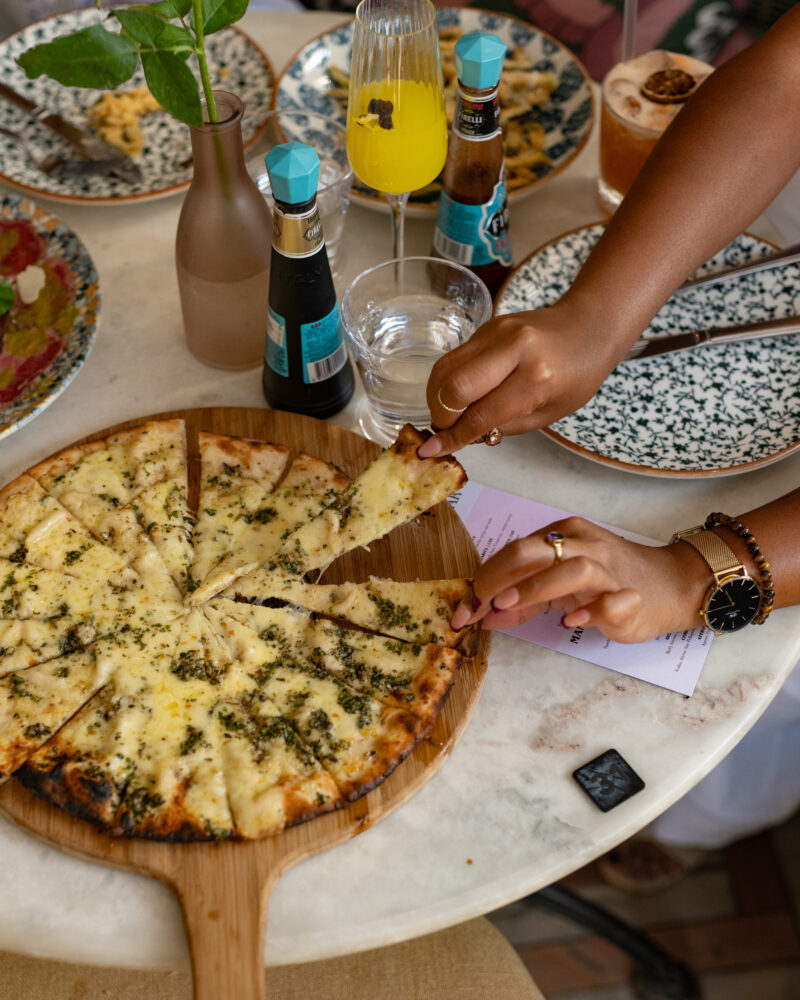Buon appetito!: Chef Ashton Frodsham and his team took weeks to work out the menu at Pink Mama’s, which
uses seasonal ingredients. Photo: Taff Studios
I recently watched a heartwarming film on Netflix called Nonnas. It follows the story of Joe Scaravella who, after his beloved grandmother dies, finds a way to reconnect with her memory through food.
He stumbles through recreating some of her recipes, half remembered and half improvised, and in the process, stirs up more than just pasta. He stirs up a dream.
Instead of using his inheritance to settle his debts, Joe chooses to honour his grandmother differently — by opening a traditional Italian restaurant. But here’s the twist — he staffs his kitchen with grandmothers, or nonnas, from different parts of Italy, many of whom were his grandmother’s friends.
These are women who bring more than just recipes to the kitchen; they bring heart, stories and memory, folded gently into each lasagne layer and stirred into every pot of marinara sauce.
As I watched this, I couldn’t help but think, “What if we had something like this in South Africa? What if food could be more than an Instagrammable plate, more than a fleeting trend — what if it could be a bridge between generations, a celebration of memory and culture?”
A few days later, the universe responded.
I found myself walking up to a pink house in Rosebank — yes, an actual house painted the softest, dreamiest shade of pink. It felt like stepping into a postcard. This was Pink Mama’s, a new Italian restaurant that has been creating ripples across Johannesburg’s food scene. I had to see it for myself.
Now, Joburg’s restaurant culture is many things: vibrant, fast-paced, ever-changing. But, often, it can also feel manufactured. Places open with more attention paid to photo backdrops than flavour profiles. We’re served dishes that look like heaven but taste like disappointment.
Pink Mama’s was different.
I spoke to Ashton Frodsham, the general manager and creative mind behind the menu.
“People are really loving our restaurant,” he told me. “It’s a quaint old home, so it does have that homely feel to it.
“We hand-selected all the furniture, as well as the cutlery and glassware. It really does feel homely.”


 A taste of Italy: Pink Mama’s, which is located in a house that’s painted pink in the Johannesburg suburb of Rosebank, offers authentic Italian cuisine, reminiscent of that offered in the film Nonnas. Photo: Taff Studios
A taste of Italy: Pink Mama’s, which is located in a house that’s painted pink in the Johannesburg suburb of Rosebank, offers authentic Italian cuisine, reminiscent of that offered in the film Nonnas. Photo: Taff Studios
He wasn’t exaggerating. The moment you step inside.it feels like someone’s memory brought to life. The tiled floors, vintage portraits, vibrant colour profiles — it felt like Nonna’s house, but with Joburg flair.
As I sat in the middle of the restaurant, soaking it all in, a moment happened that felt like a scene pulled right from Nonnas.
An elderly white man, cardigan casually draped over his shoulder, his accent thick with Italian warmth, approached my table.
“Can my wife and I join you?” he asked, before turning and calling out to her across the room, without waiting for my response. She gently declined and called him back with the kind of familiarity that only years of marriage can build. He smiled, apologised and returned to his table.
And there it was — an accidental moment of community, of curiosity, of cultural overlap. A moment that made me wonder, if I were in a small village in Italy, wouldn’t this have been completely normal? That interaction, brief and whimsical, stayed with me.
Then came the food.
I ordered their 50-layer lasagne. Yes, clichéd — but also a necessary test. If an Italian restaurant can’t get the lasagne right, then what are we even doing?
They nailed it.
Each layer was soft but structured, the pasta cooked to perfection. The marinara, a sauce that often risks being too acidic, was mellow, sweet and tangy in the most balanced way.
The meat was seasoned with care, generous but not overwhelming. It melted in my mouth, and with each bite, I found myself smiling.
The portion? Enormous. And yet, I couldn’t stop. I took the leftovers home, but even on the drive back, all I could think about was getting home to finish it. And when I did, I was not disappointed.
Frodsham told me the menu took four weeks to develop and months to refine with the staff.
“Most of the dishes are meals I’ve cooked for my own family and friends. Food is central to who we are. When we travel, we go looking for meals that will inspire our next home-cooked dish,” he said.
He also mentioned something that impressed me — the menu changes with the seasons. If an ingredient isn’t in season, that dish disappears, making room for fresher, more inspired offerings.
It’s a level of respect for both the diner and the ingredients that’s rare in our food scene.
I ended my meal with a virgin mojito — refreshing and simple.
As I left, I couldn’t help but feel excited. About Pink Mama’s, about what’s possible in our city, and about the ways food can bring us home — even if that home is someone else’s, on another continent.
Pink Mama’s gave me a taste of Italy in Johannesburg. But more than that, it gave me a glimpse into what’s possible when restaurants are built on memory, meaning and love.
Just like Nonnas.
And maybe one day we’ll have our own version of it here, staffed by gogos, cooking recipes passed down through generations.
Food with a heartbeat.